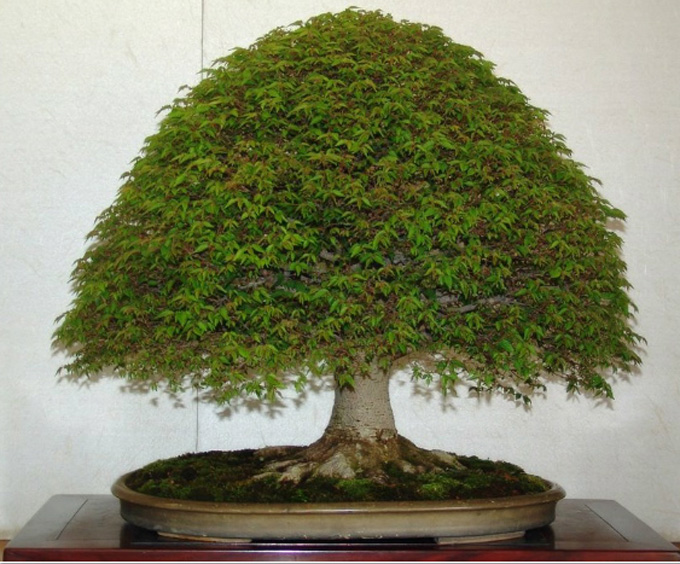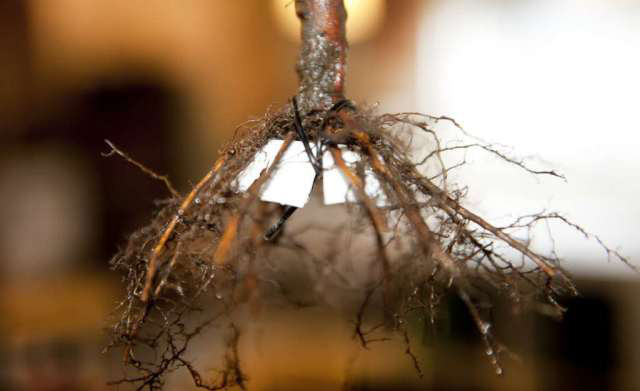 In addition a one of the most perfectly developed crowns you’ll ever see, with its amazing profusion of tiny leaves; this
In addition a one of the most perfectly developed crowns you’ll ever see, with its amazing profusion of tiny leaves; this Trident maple (I must’ve been drunk, any fool can see that this is a Zelkova) provides one of the best examples of trunk and surface root (nebari) development you’ll see anywhere. Neither are overstated; providing a welcome relief from overdeveloped trunk taper and nebari that you sometimes see in Trident maples. But then, you might expect perfection from this tree, it’s from the Grand Master Saburo Kato’s collection (Kato-sama’s most excellent book, Forest, Rock Plantings and Ezo Spruce Bonsai is offered by Stone Lantern).
The photo is from a series of photos on Morten Albek’s Shohin-Europe website, titled Mansei-en 2011. Mansei-en is the name of Saburo Kato’s bonsai garden and Morten Albek is the author of Majesty in Miniature, Shohin Bonsai (Stone Lantern Publishing). Mr. Kato died in 2008 (Phoenix Bonsai has an excellent biography). Morten is, as far as I know, alive and well in Denmark .
Growing better shohin roots and trunk
Morten Albek has just posted a practical guide to growing better roots and trunks. It’s for Shohin bonsai, but you can apply the techniques to larger bonsai as well.
 One of a series of photos by Morten Albek on growing better shohin roots and trunk.
One of a series of photos by Morten Albek on growing better shohin roots and trunk.
The trident looks like a tree. Which is the whole point! :-)
The trident looks an awful lot like a zelkova, too ;)
Thanks Ferry and Rui,
Yeah. Zelkova makes more sense, but to these not so young eyes, the leaves still look tridentish.
Thanks guys,
I knew that!
The trident and serrata leaves are very different.
Thanks Rui,
I know that, it’s just my eyes that saw three little prongs on each leaf. Still, a moments thought should have told me it was a Zelkova. The style and bark also give it away.
Whatever happened to “Let the birds fly through”? Looks like an impenetrable helmet to me…and can’t see the twigs.
HI Phil,
Maybe the birds are hiding in the twigs.
More seriously; even though you can’t see into this tree, I still think it’s wonderful. As far as the birds go, I think if you could have asked John Naka a follow up question, he would have allowed that there are always exceptions.